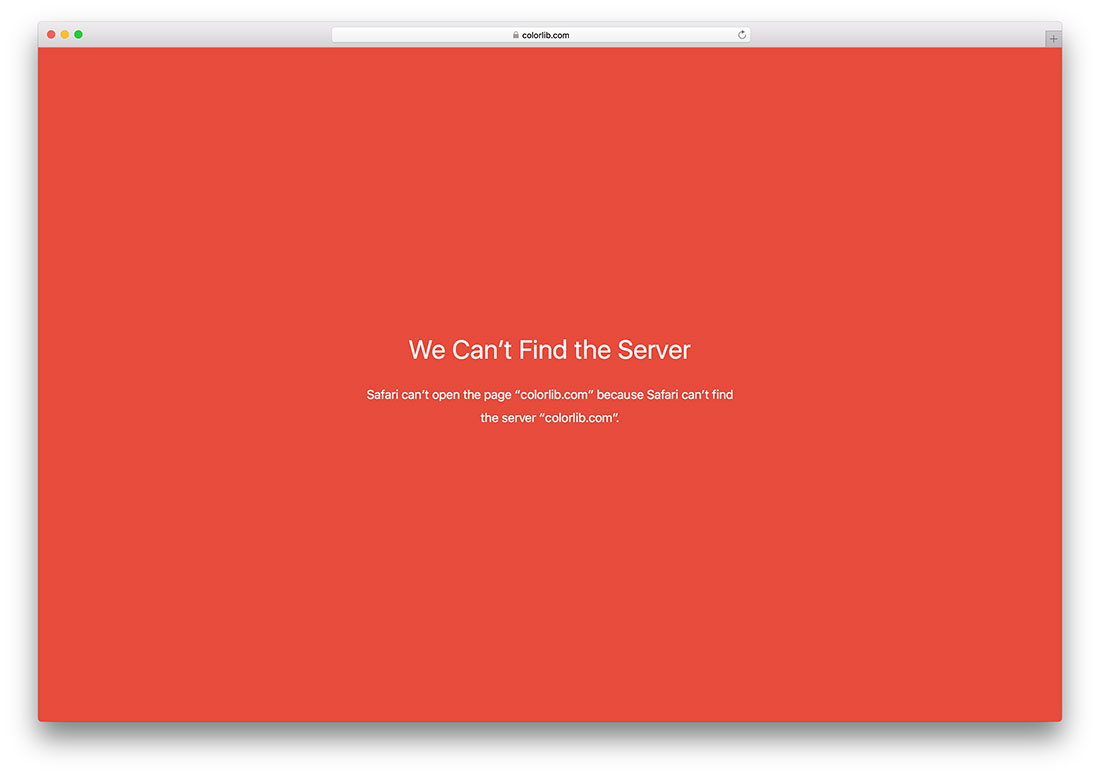What causes WordPress website downtime? What does it cost your business and brand?
Almost all websites, even the incredibly popular ones experience downtime at some point.
There are many reasons why WordPress websites crash and your website might go down too! Maybe for a couple of minutes, maybe for a couple of hours.
Let me put the scale of the problem into perspective. Given the period of one year with a hosting service that promises 99% uptime, your hosting service is implicitly telling you, that your website can experience a downtime of about 3.6 days in a calendar year.
Is that okay? If you are serious about building a top-notch business using the web to extend your reach and intend to utilize your website to find new clients to sell your services or find new customers for your products, then 3.6 days is 3.6 days more downtime than you can afford.
Even if a hosting service assures 99.9% uptime (like SiteGround), that allows room for the possibility about an hour of downtime. If you are building your first web business, you’ll need to be wary of downtime. Downtime can potentially cost your business a lot!
While most of the causes for downtime are common across most Content Management Systems, I’ll be discussing problems & providing solutions for web entrepreneurs who use WordPress to run their online platform.
What happens if your website crashes or is unavailable for any period of time?
If you are unconvinced regarding the costs imposed by a website crash for any time, that needs to change. If your website crashes for a few hours every month, let’s look at what you stand to lose.
Your profitability takes a hit, every second your website is down you lose revenue. This is the most direct impact of site downtime. Based on how long your site crashes, you lose a potentially sizable chunk of your annual revenue. Facebook loses about $1.7 million in advertising revenue every hour the website is offline.
Imagine your site which thrives by selling a product or acting as an affiliate crashes during a festive period when shopping tends to peak. Take for example, Black Friday 2014 many websites struggled to keep their websites online and we’re talking about some of the biggest players here. According to Uptrends’ Blog – Of the 40 retailer websites they monitored, only 27 maintained a perfect 100% uptime rate during the festive season surrounding Black Friday/Cyber Monday 2014.
It costs you customer satisfaction and loyalty. Your site crashes, how long do you think your customer will hang around before deciding to purchase elsewhere? There is no space for missteps in a highly competitive industry like eCommerce.
Potential business partners and prospective investors lose confidence. Any self interested business partner or prospective investor will almost instantaneously decide not even to bother contemplating a partnership or an investment in your venture. I can only imagine, I would never buy from an unreliable online retailer. How do you think someone interested in investing will look upon site downtime.
Search Engine Rankings will be greatly affected, if your website should go down for extended duration of time repeatedly. Google does make a few allowances when it comes to downtime. If Google finds that your site isn’t up for some reason, a Googlebot will visit again 24 hours later and check if the site is accessible. If your site is found to experience downtime repeatedly for intervals greater than 24 hours, you’ll be putting your SERPs at significant risk of taking a nosedive.
What Causes Downtime ?
If you intend to tackle the possible causes for website downtime, you’ll want to know what factors most cause downtime. Where do I start?
Software Goes Awry Or Gets Compromised
Your website runs on a Content Management System, which interacts with some other software you use to add a skin & some functionality to your website, a compatibility problem may cause your website to crash.
Software compatibility issues can wreck havoc with your up time and even you’re a seasoned web developer, there is every chance that your website may break due to new software you introduce or due to unforeseeable compatibility issues.
Compatibility issues can be overcome by using a staging environment to test things out before using the new software on a live website. Some hosting service providers provide a staging area for you to try things out. You can employ backups of your websites to prevent site crash before any major or even minor update, so you can rewind time to before the crash.
DNS problems are also quite frequent and certainly are very strong contenders for the leading cause of website downtime. DNS is the equivalent of a phone book for your site’s IP address. When someone types yourdomain.com into their browser, the user’s Internet Service Provider looks it up in a DNS server that directs your browser to the matching IP address which is basically your site’s address.
Handling DNS is particularly tricky, there are many parties that need to work together to make sure everything works as it is supposed to. Configuring your DNS records to the correct name servers is typically done by the domain registrar from whom you initially purchased the domain.
Configuring your DNS is generally something you’ll need to work out with your registrar (who may also happen to be your hosting service provider). If the updates for changes on your websites take time to register or if you use incorrect settings, your website can become painfully slow and possibly crash.
You can and should use tools like DNS Health from Pingdom, Domain Health Report from MX Toolbox, Open DNS Cache Check or Into DNS to help find and fix problems with your DNS.
Vulnerabilities in software at your end is can cause downtime.
Dedicated denial of service attacks on popular websites are very common, it can potentially bring your website to a crawl. If you use shared hosting, you may be more at risk, this depends entirely on your how well your hosting provider segregates server processing power and memory. Using a dedicated server means you’ll only need to protect your own servers from DDOS attacks, but their cost puts them out of reach for most new businesses.
Apart from DDOS attacks, hackers may attempt to find and exploit popular vulnerabilities in WordPress software or vulnerabilities found in third party software you add to your website.
Maintaining your website and ensuring its security is a task unto itself. I’ve written a very detailed article on how WordPress websites are exploited and how you can protect your WordPress website. I sincerely recommend you give it read, it’ll keep your website safe from most attacks.
Web server software like Apache Web Server, MySQL, SQL Server, Microsoft IIS, MariaDB, PostgreSQL, PHPMyAdmin et all are all required for many web hosts to keep things running smoothly. Software at your end is only one part of the equation, your hosting service runs a lot of web server infrastructure which requires a lot of software to keep things running smoothly.
If software on the server side of things is not regularly updated, it could lead to problems and cause your site’s security to become compromised. Check out how many well known web hosts run on old software which aren’t necessarily vulnerable, but still presents potential problems down the line.
An easy and pricey way out of all of the aforementioned problems – Use a managed WordPress hosting service like WPEngine and you’ll not have to worry much. But many web entrepreneurs can not afford a pricey hosting option.
Software (CMS & web infrastructure) is certainly a very important aspect of maintaining perfect up-time records.
Hardware
All the software in the world requires fully functional & operational hardware to ensure 100% up time. Hardware that runs most websites now is very reliable, the technology in this space has come a long way in the last decade.
Even low cost hardware infrastructure (shared hosting environments) offer very strong performance. And most hosting service providers have RAID disk arrays, multiple power sources, on site/off site backup and more depending on your choice of web host. So that’s pretty impressive. Shared environments can always be compromised if the server resources are not effectively monitored and segregated to ensure one website doesn’t use a large percentage of a shared server’s hardware resources.
The physical security for data centers is taken very seriously. Access to the hardware is restricted and there is a tendency to employ key cards, bio metric scanners and round the clock surveillance to ensure security. Many web hosts also use advanced fire suppression and powerful cooling systems to fire proof their systems.
Virtual Private Hosting like the one Colorlib uses (Digital Ocean) start at $5/mo. And with a VPS you’ll get what you’ve paid for and will not be exposed to possible problems you may face with a shared hosting environment.
Using a VPS may require considerable technical know-how, which, if you are uncomfortable with, leaves you with the only other choice – managed WordPress hosting. A managed WordPress host can handle software & Hardware if you prefer not to get your hands dirty. If you are undecided which type of hosting service you can handle or your website will need, please read a very extensive account, I’ve written in the last few months.
Tackling Unplanned Downtime
All of what I’ve discussed previously deals with how to prepare against unplanned downtime. In summary,
- Get your self a trust worthy host. Do not look at their promises, look at how often their servers crash, is their software up to date & if their hardware is proofed against failure.
- Ensure optimum site security.
- Hire a professional or use a managed host.
If you insist on doing the hard work yourself or you can’t afford the previous options. Here’s how you can tackle downtime. Sometimes even your web hosts may not offer some of the best web admins to prevent site downtime, so do keep all of the below in mind when searching for the right web hosting company for your business.
- DNS problems are among chief causes for downtime. Invest in a secondary or a backup DNS service which will help resolve DNS queries if your primary DNS is non responsive for any reason.
- Backup, a crucial aspect of site security for any CMS. No matter the number of security measures you employ, something can always go wrong. Find a reliable backup service.
- You can also use monitoring services to check site uptime. Also another easy trick, use Google’s page visibility reports to see what Google’s bots make of your website when they come crawling.
- Domain registrations do not last forever. Always make sure your domain is registered, use auto renew to make sure your site doesn’t go down because of silly reasons.
And what do you do when your website crashes?
For WordPress sites, there are a couple of plugins that would help handle downtime. The remedial measures required to handle a website that has crashed is the same as what you might expect with planned downtime, read on.
Planned downtime is quite different, you may be required to keep certain sections or your entire website unavailable to the public under certain special circumstances. It could be routine maintenance or you could be working on a new site design or migrating to a different host, there are various reasons for planned downtime.
If you run your website on WordPress, I’ll help you find the right tools to effectively handle planned downtime. I’ll show you which tools will best allow you to handle planned downtime in the next few weeks.
Stay tuned to Colorlib’s blog & subscribe to receive the latest from our blog.








Comments (0)